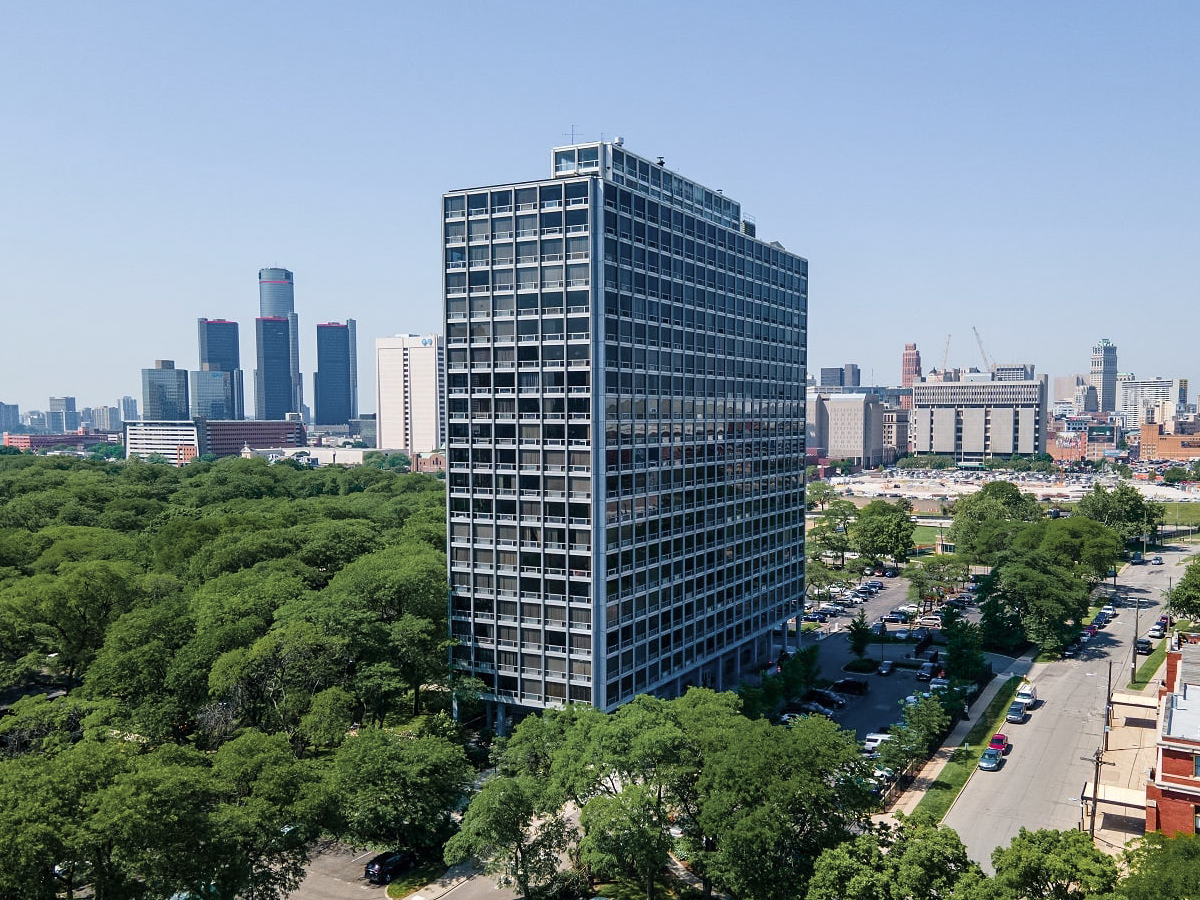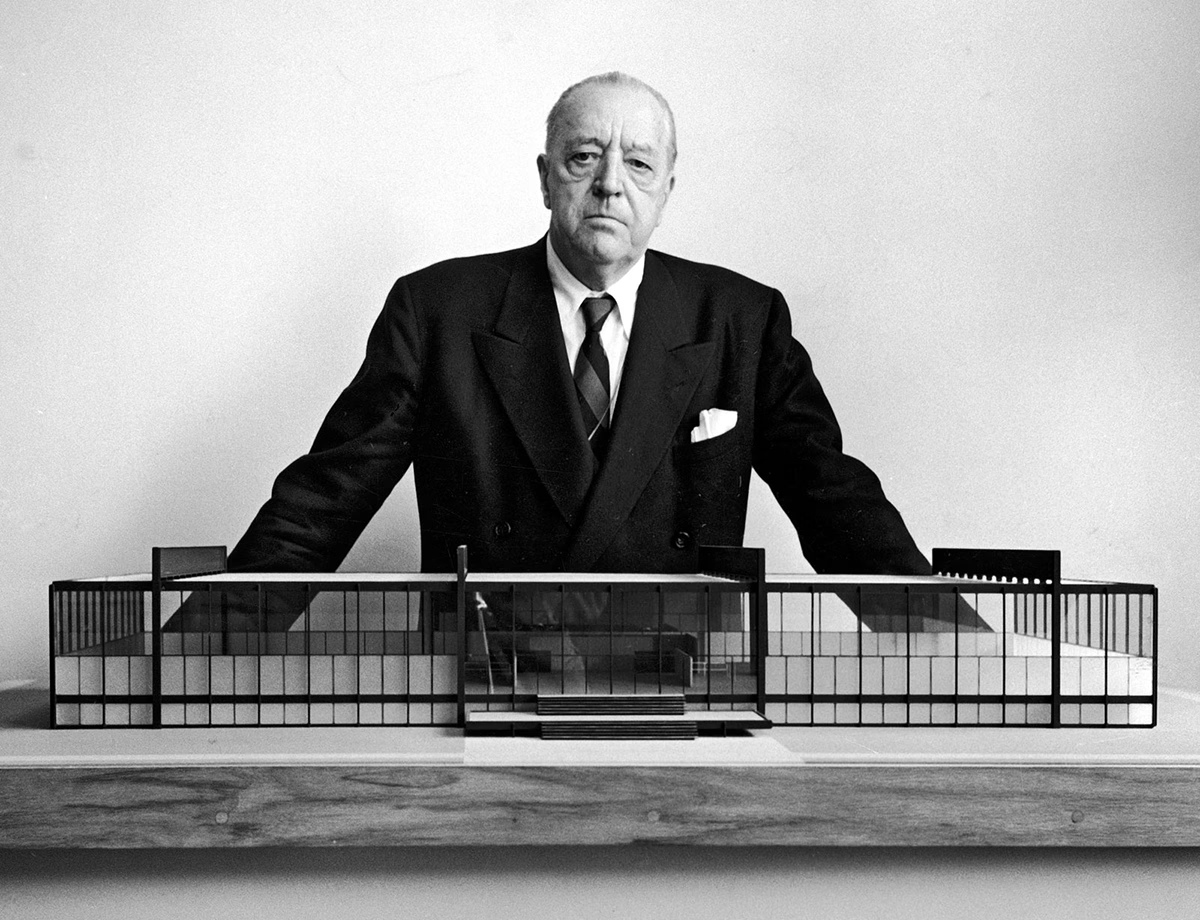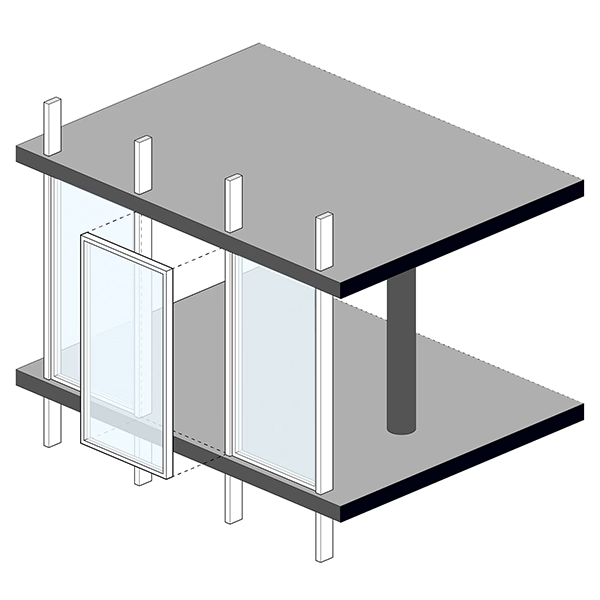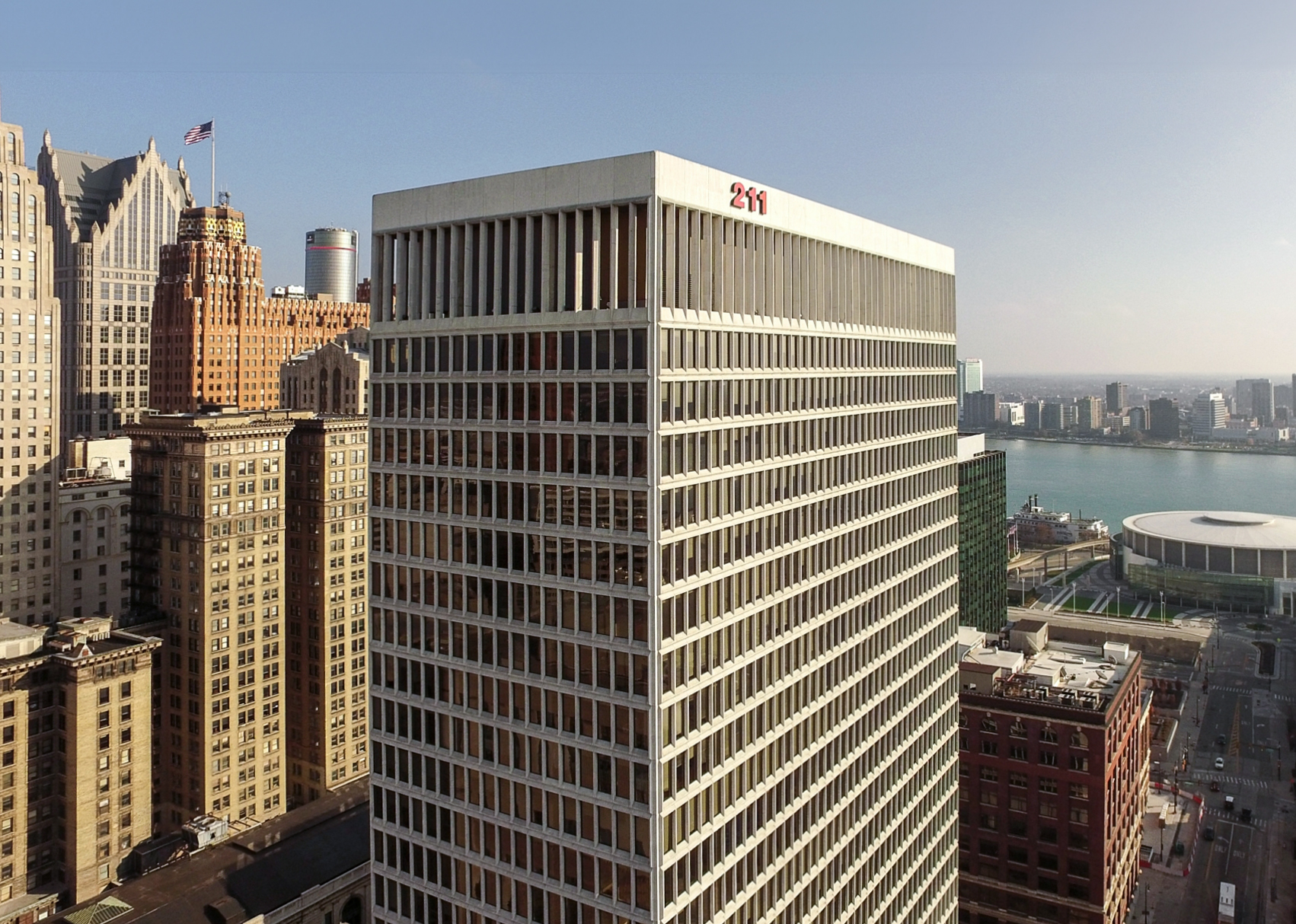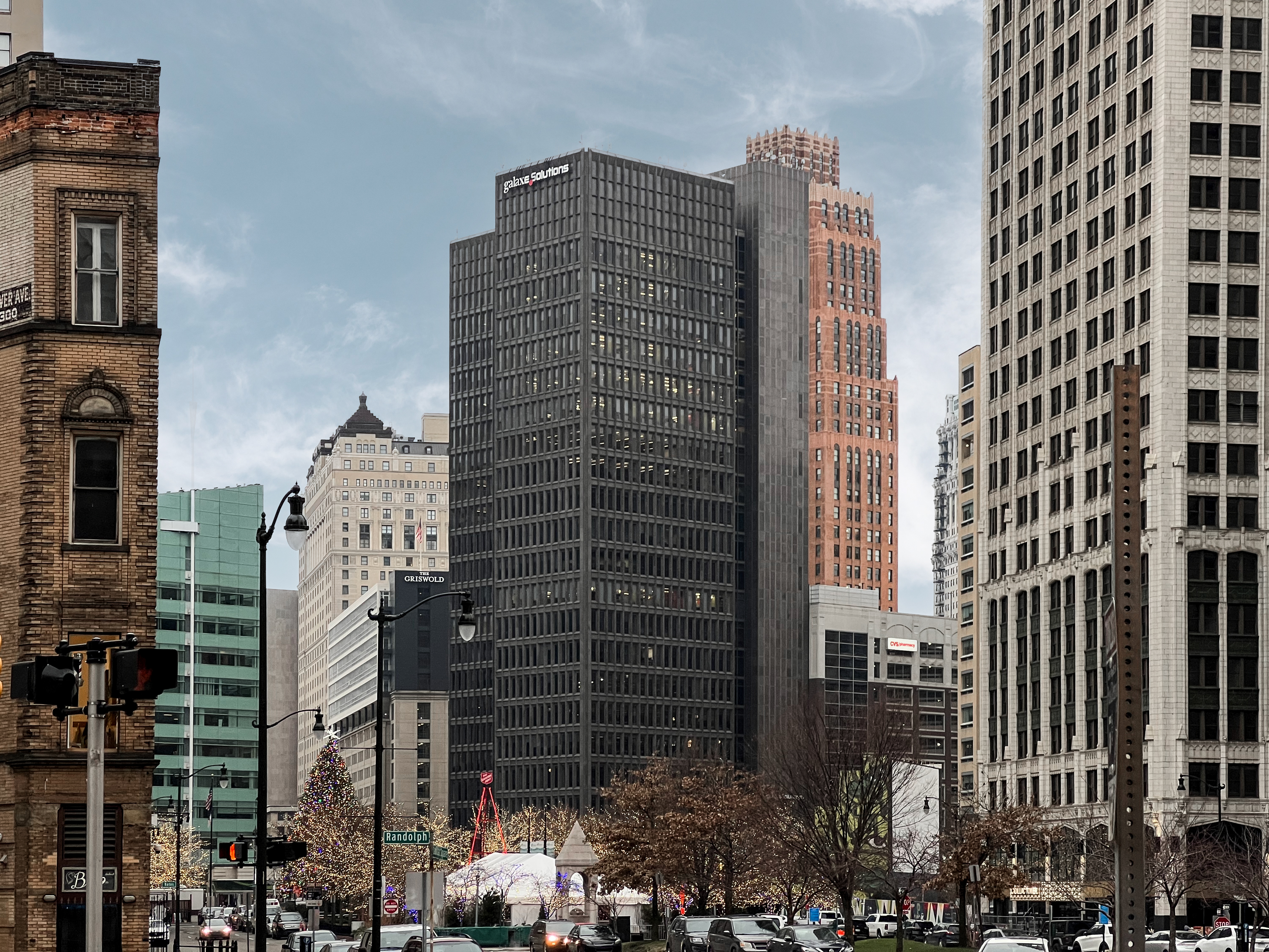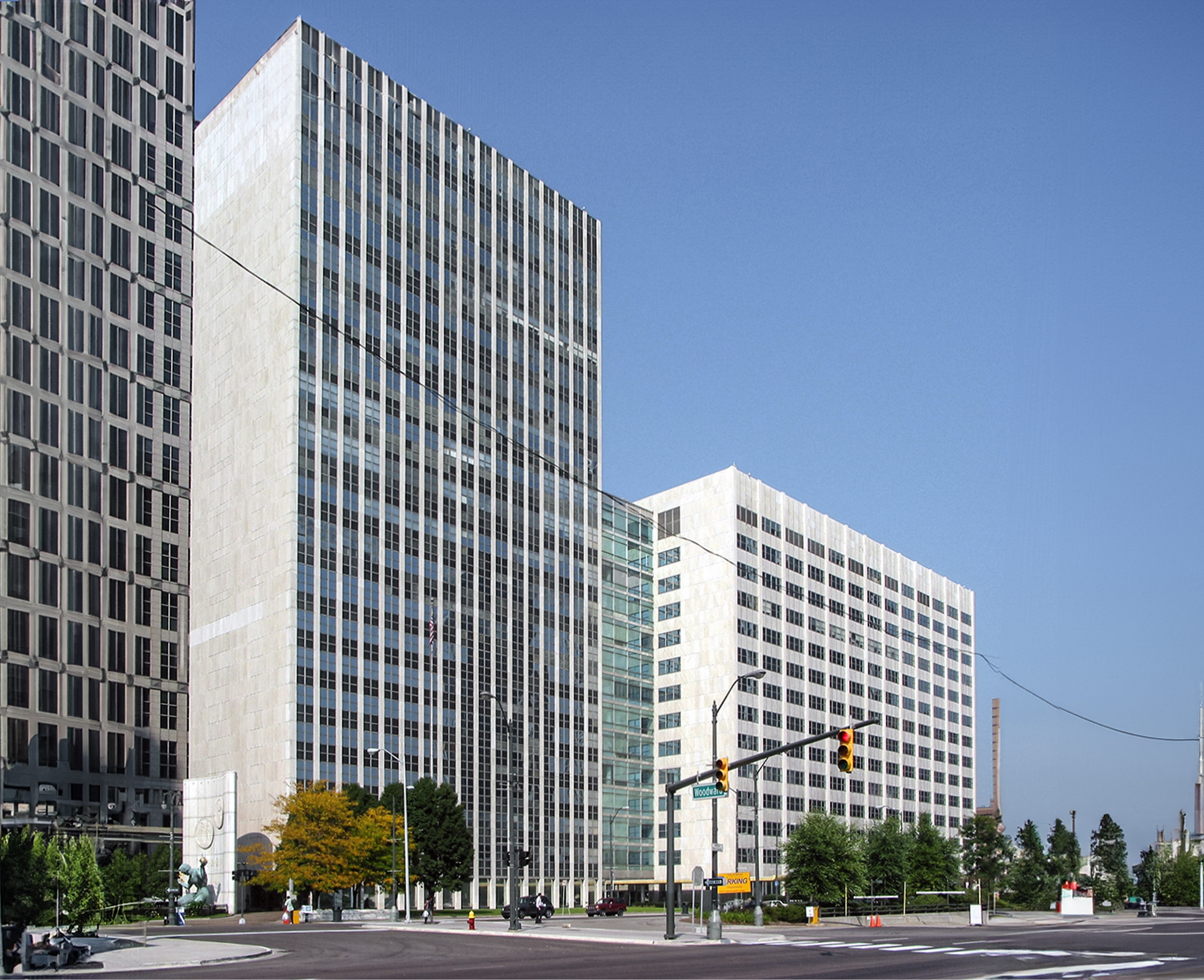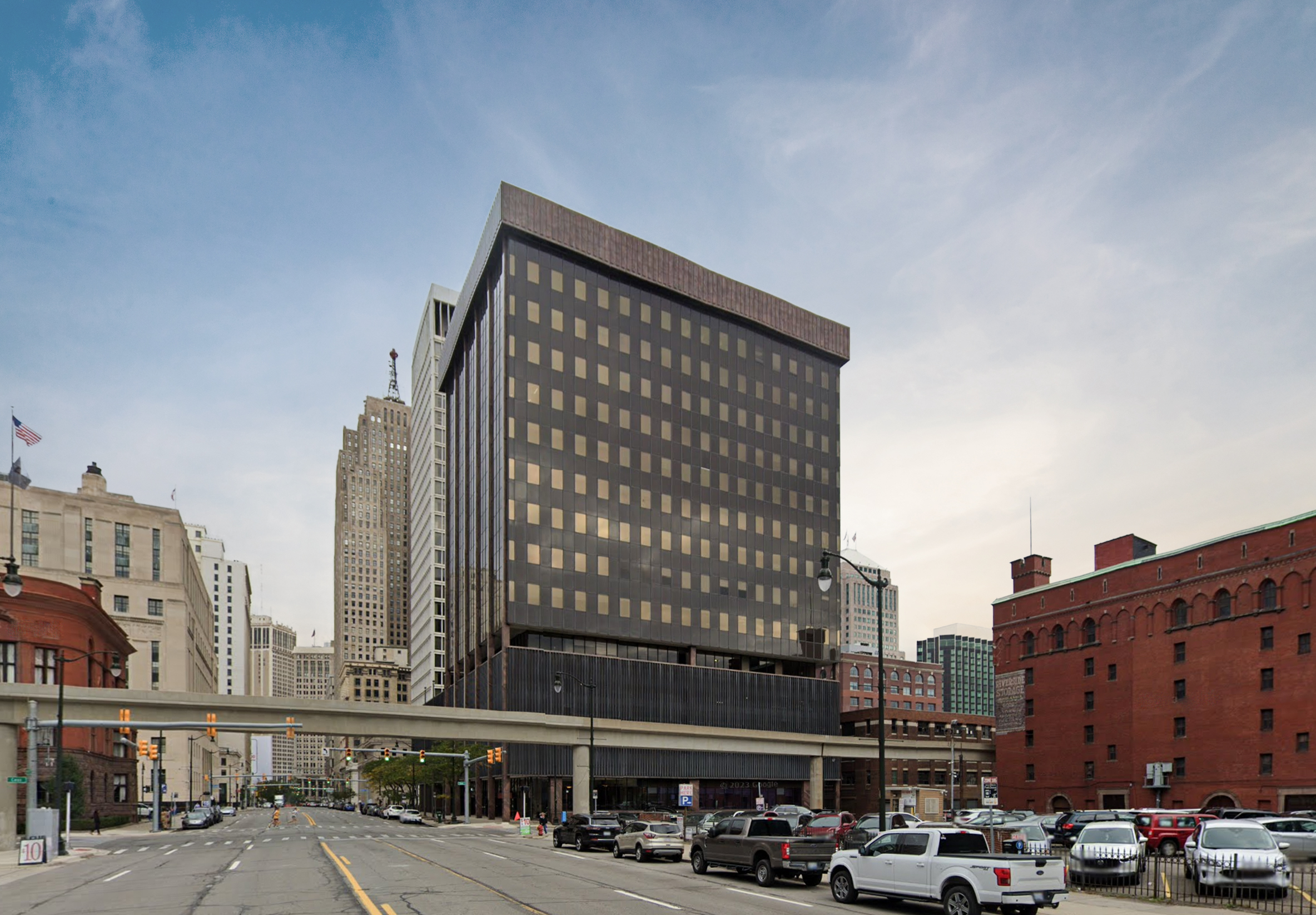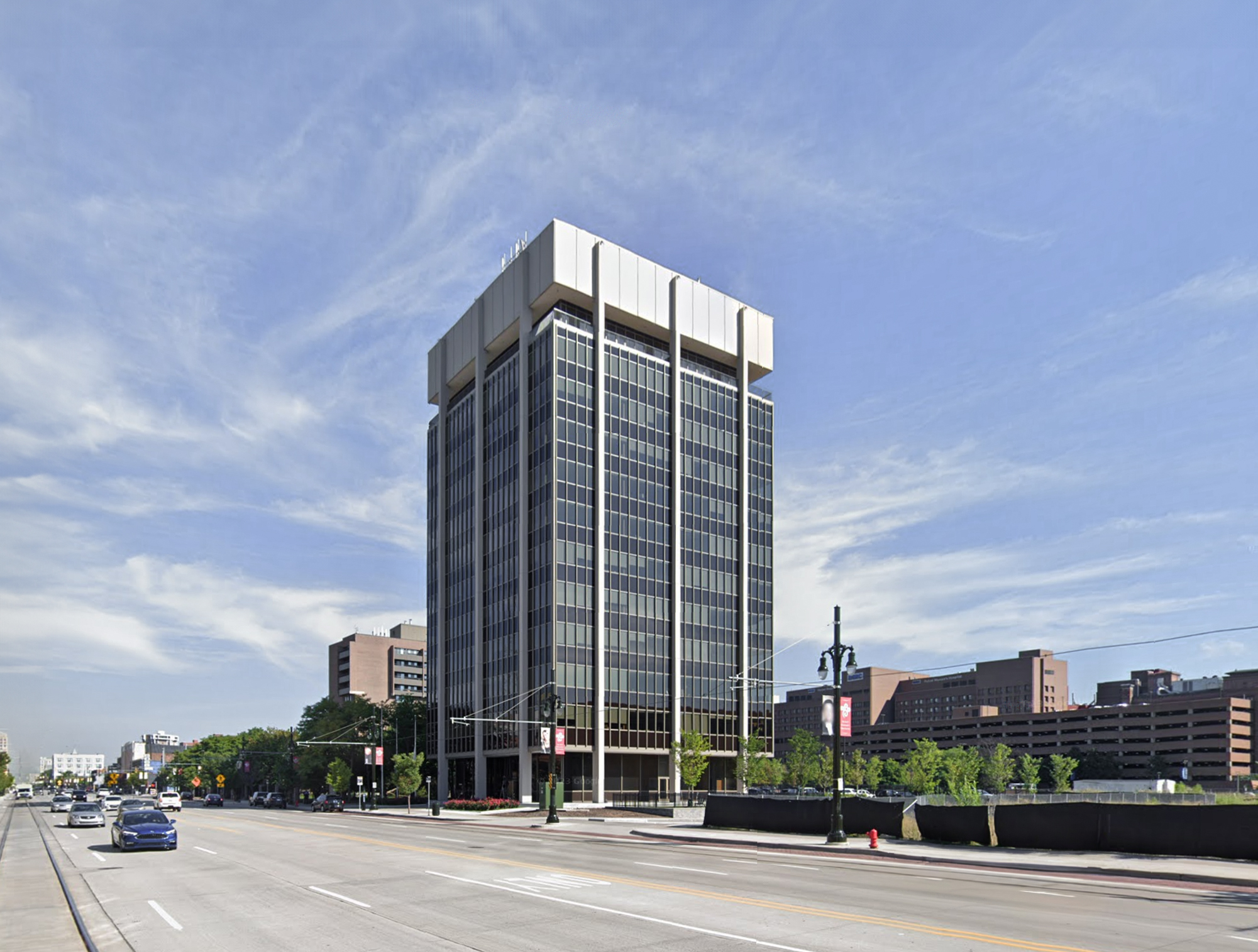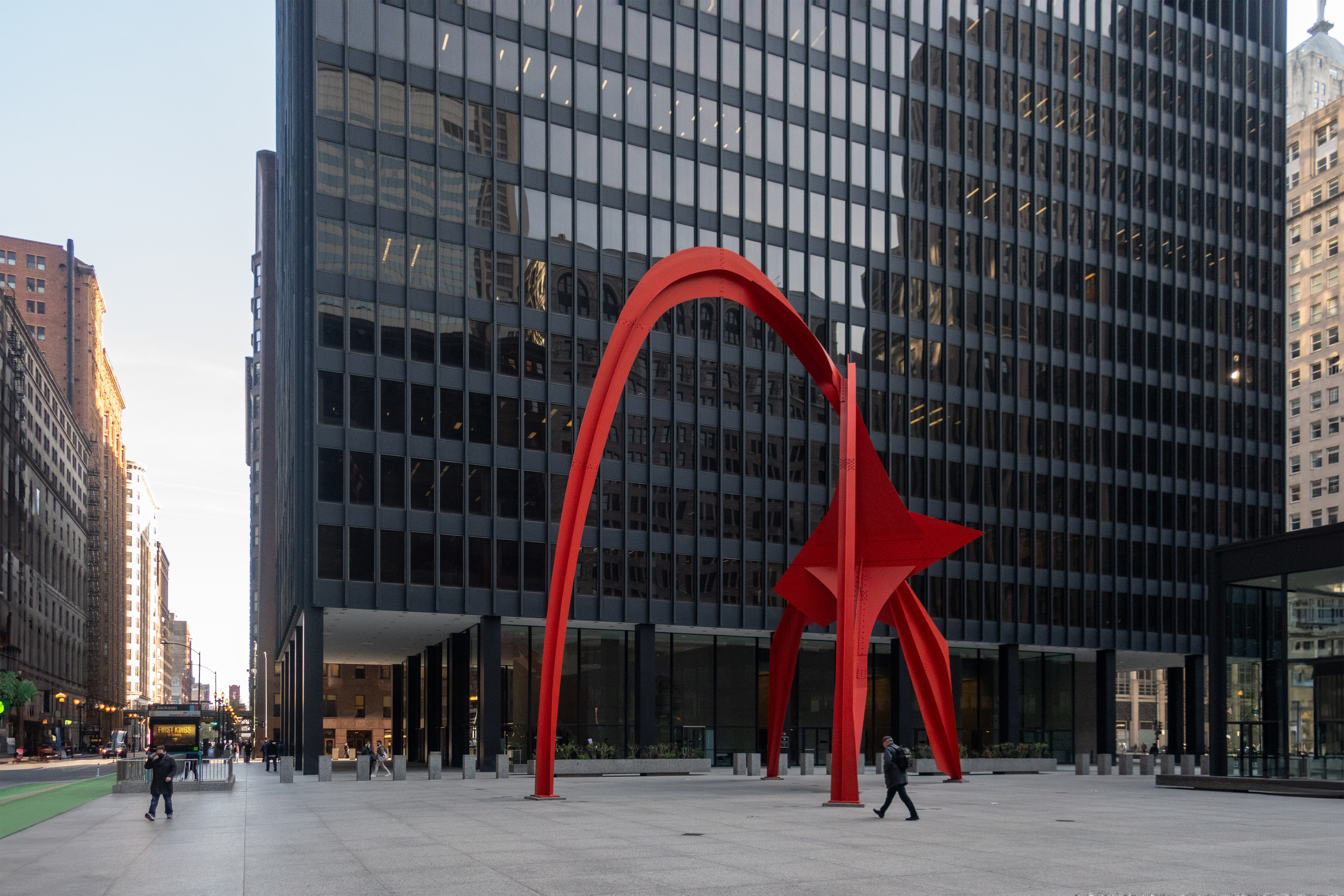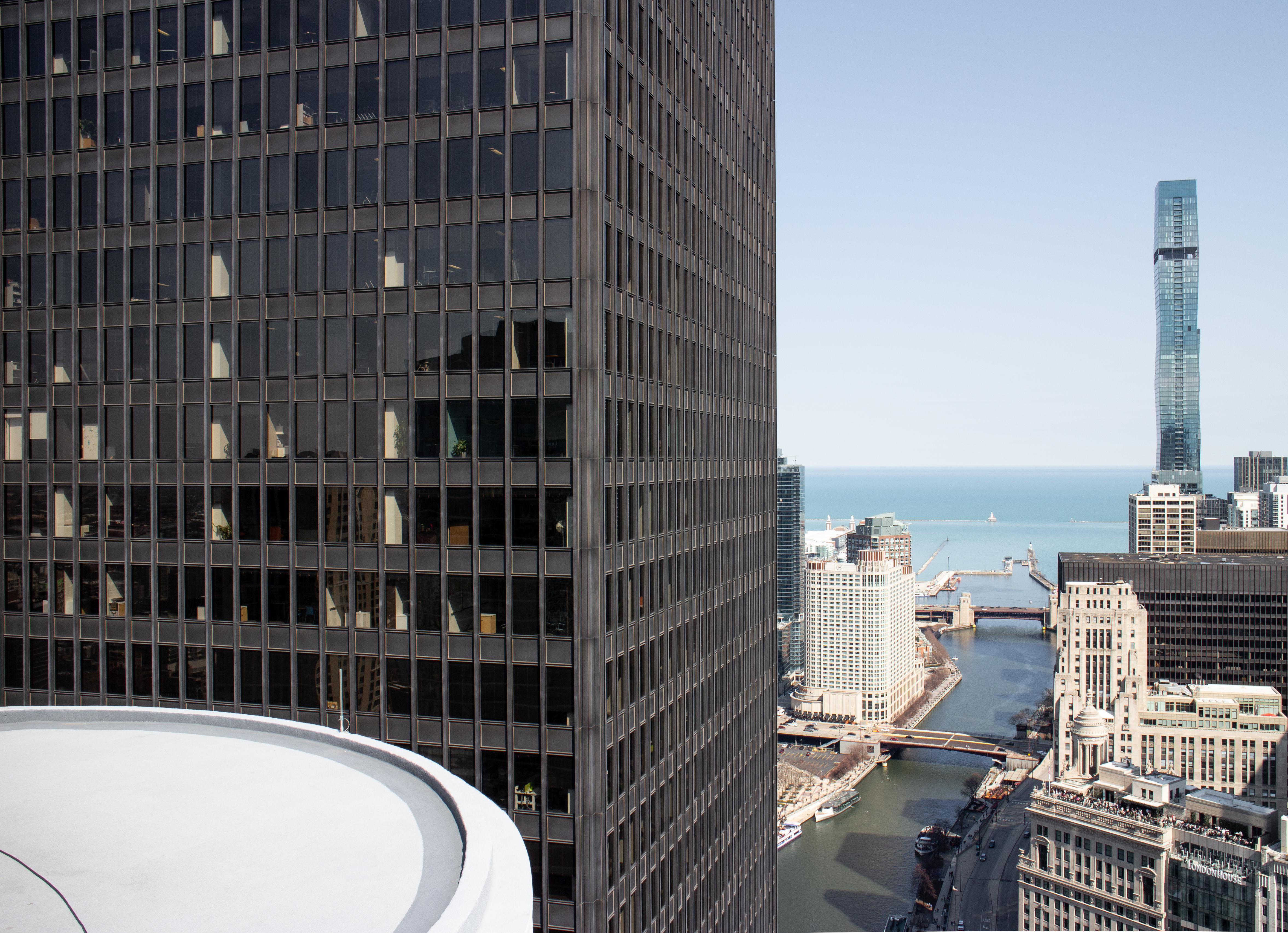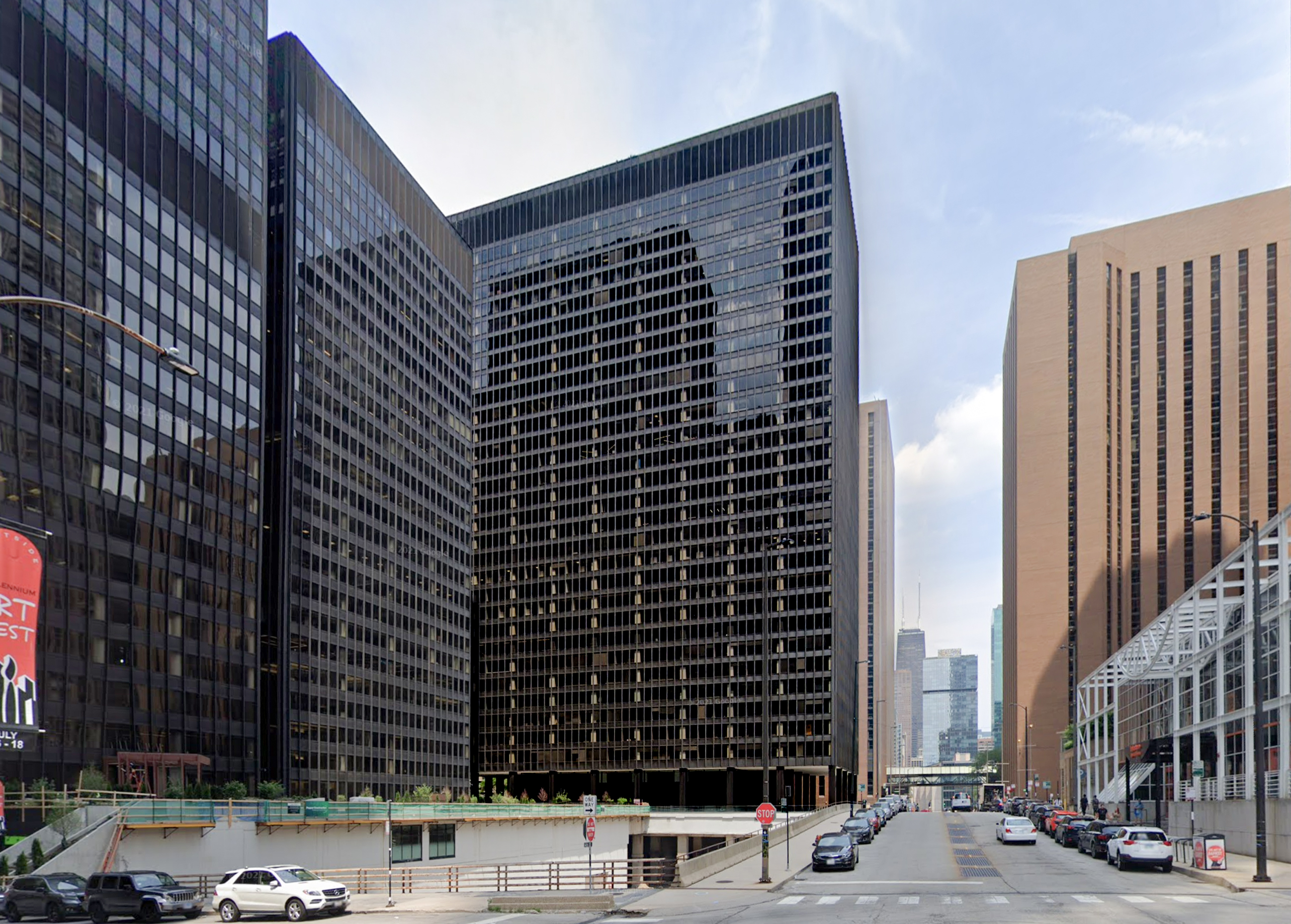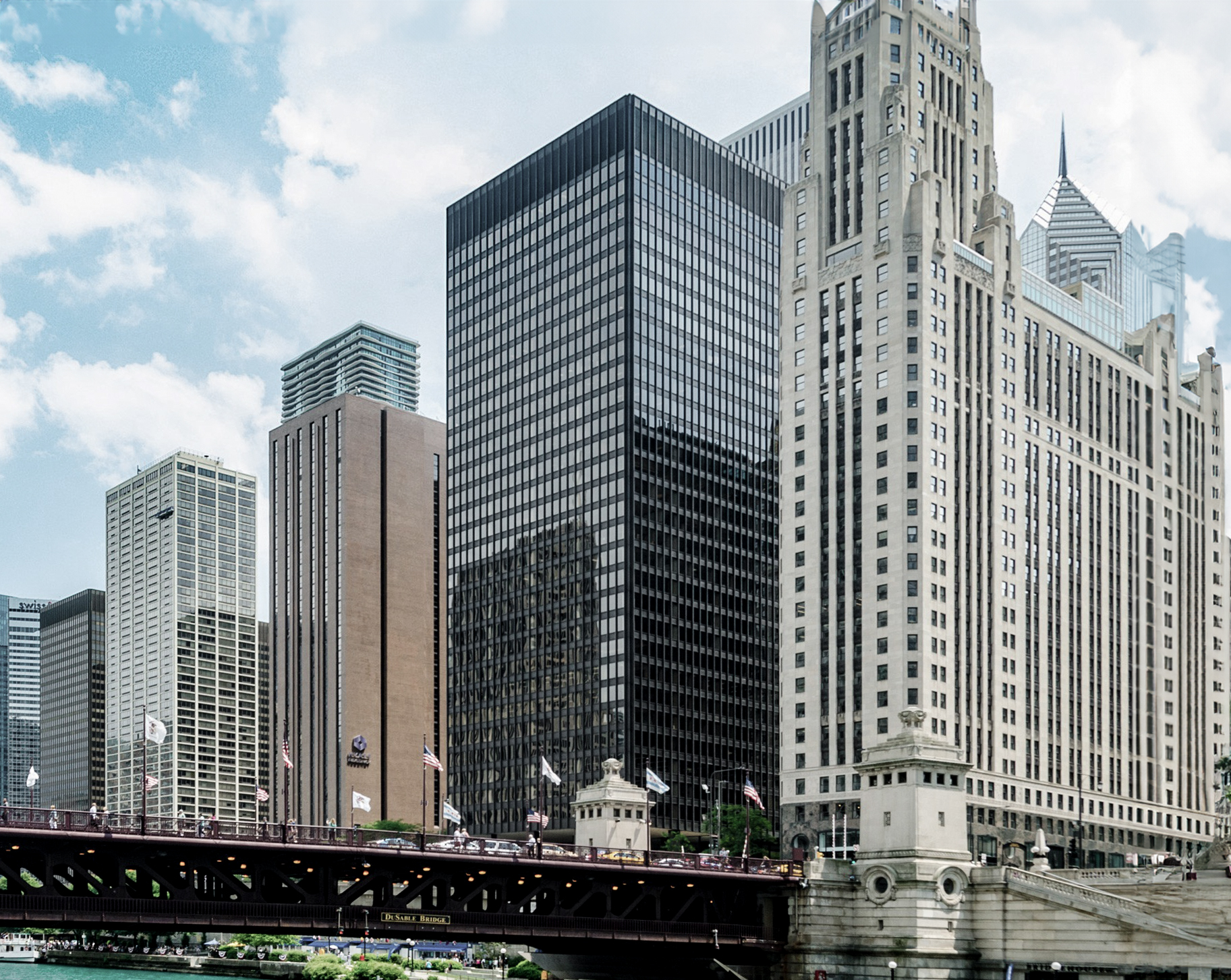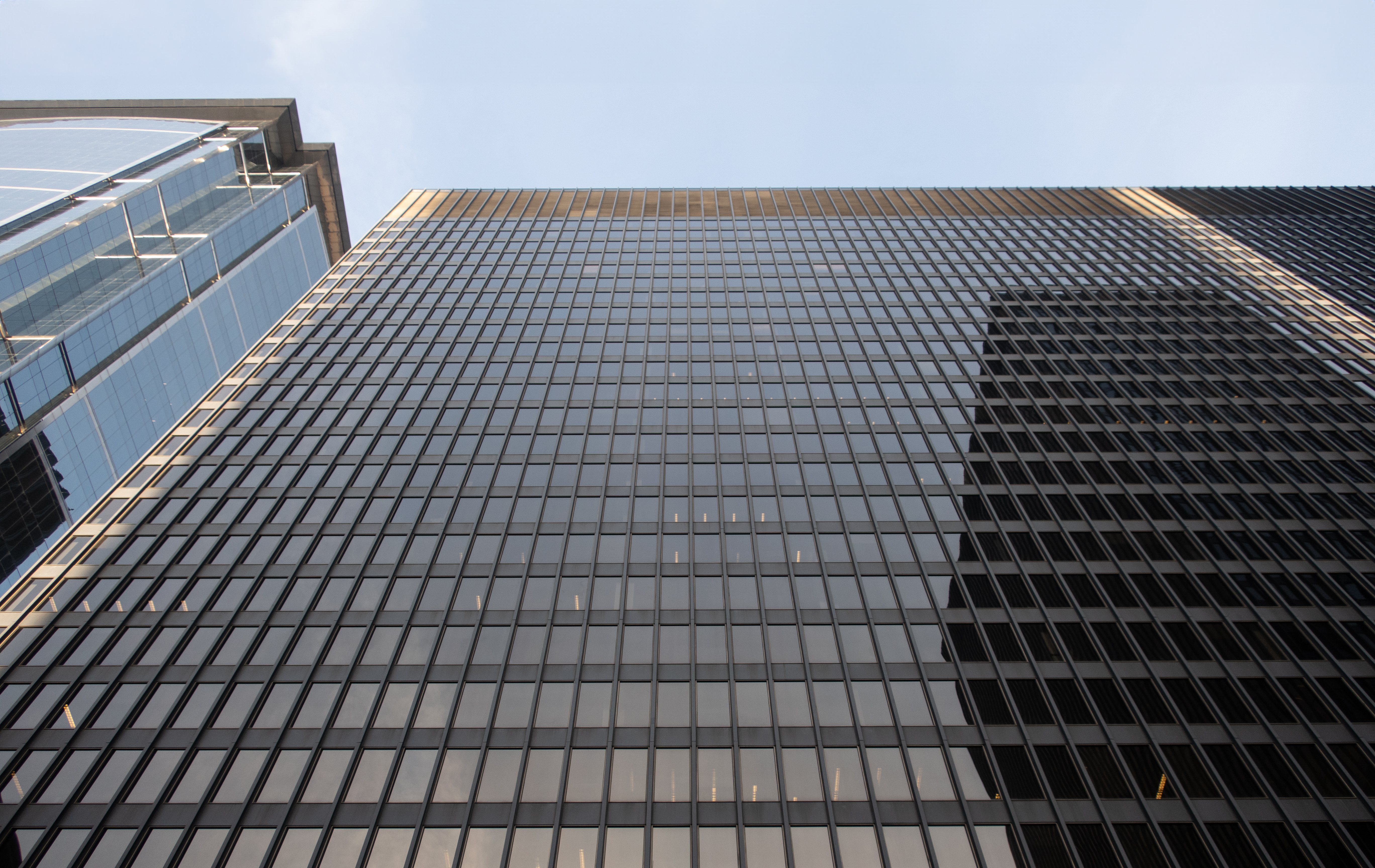The Lafayette Pavilion Apartments is an International Style skyscraper designed by Mies van der Rohe, and built between 1955 and 1958 in Detroit, MI.
Its precise street address is 1 Lafayette Plaisance, Detroit, MI. You can also find it on the map here.
The Lafayette Pavilion Apartments is a structure of significant importance both for the city of Detroit and the United States as a nation. The building embodies the distinctive characteristic features of the time in which it was built and the International Style style. Because of that, the Lafayette Pavilion Apartments was officially included in the National Register of Historic Places in 1996.
The Lafayette Pavilion Apartments are part of the four towers Mies developed in Lafayette Park. The others are the:
- Windsor Tower
- Lafayette Towers Apartments West and East
All of which were added to the National Register of Historic Places in 1996.
